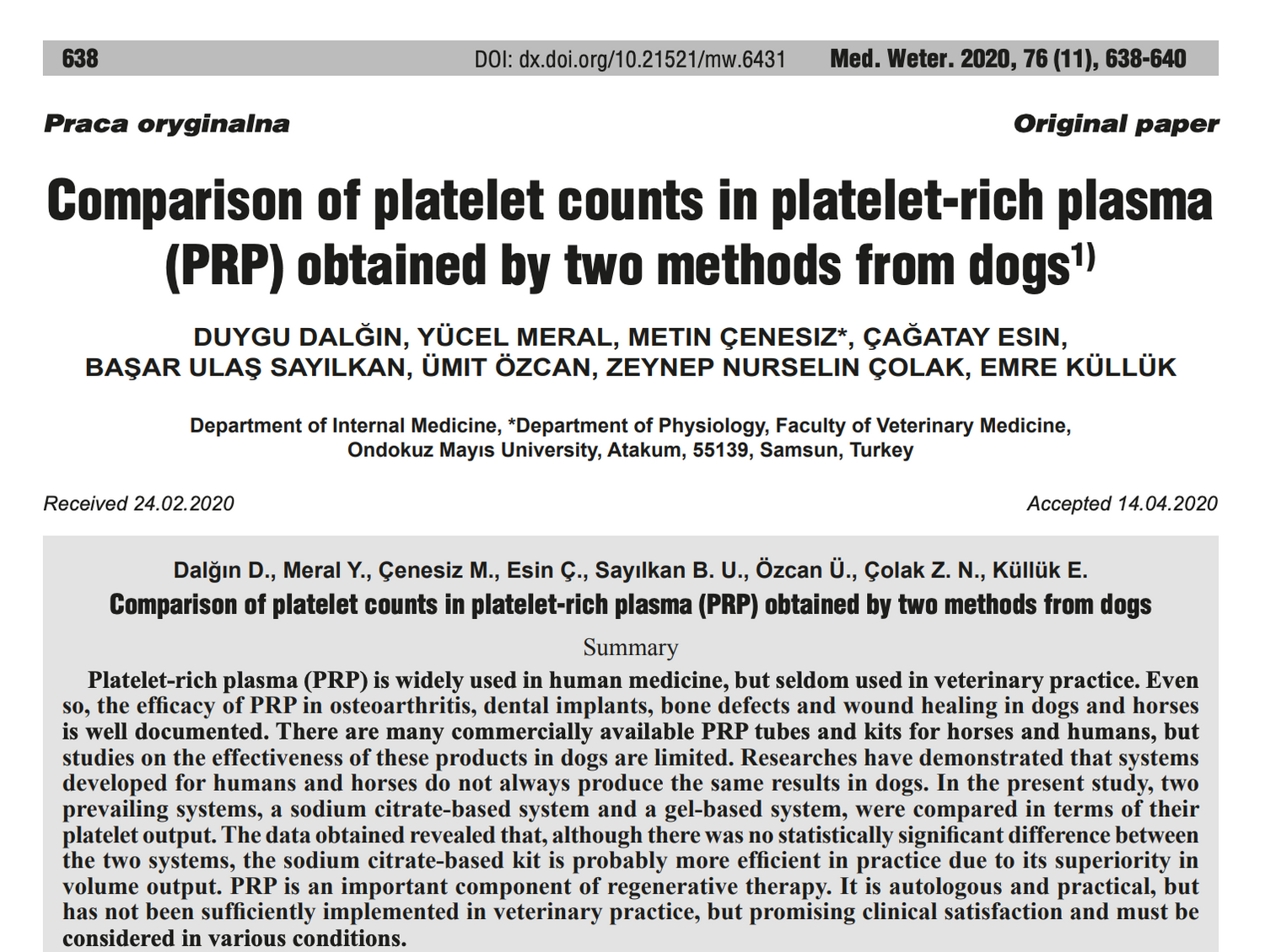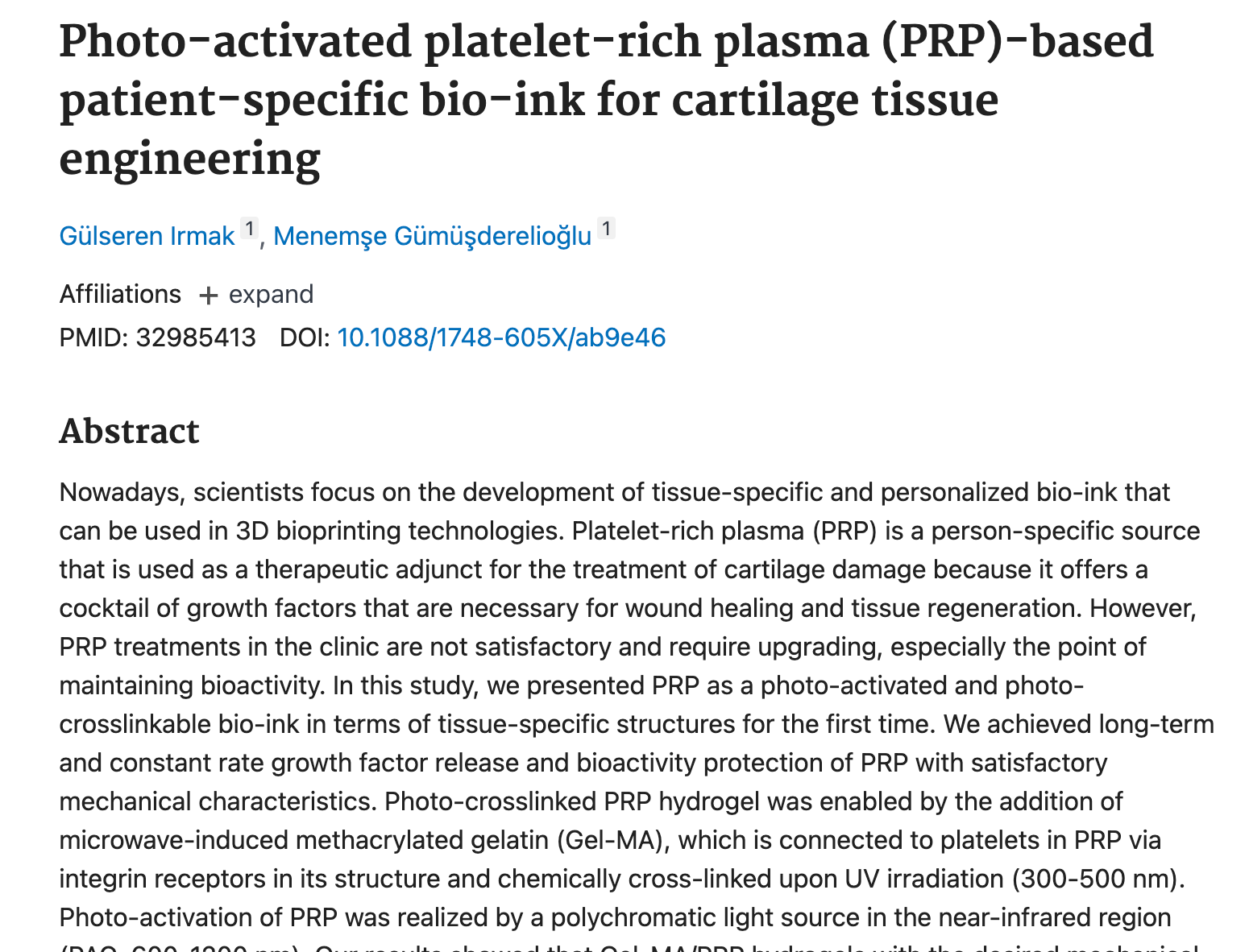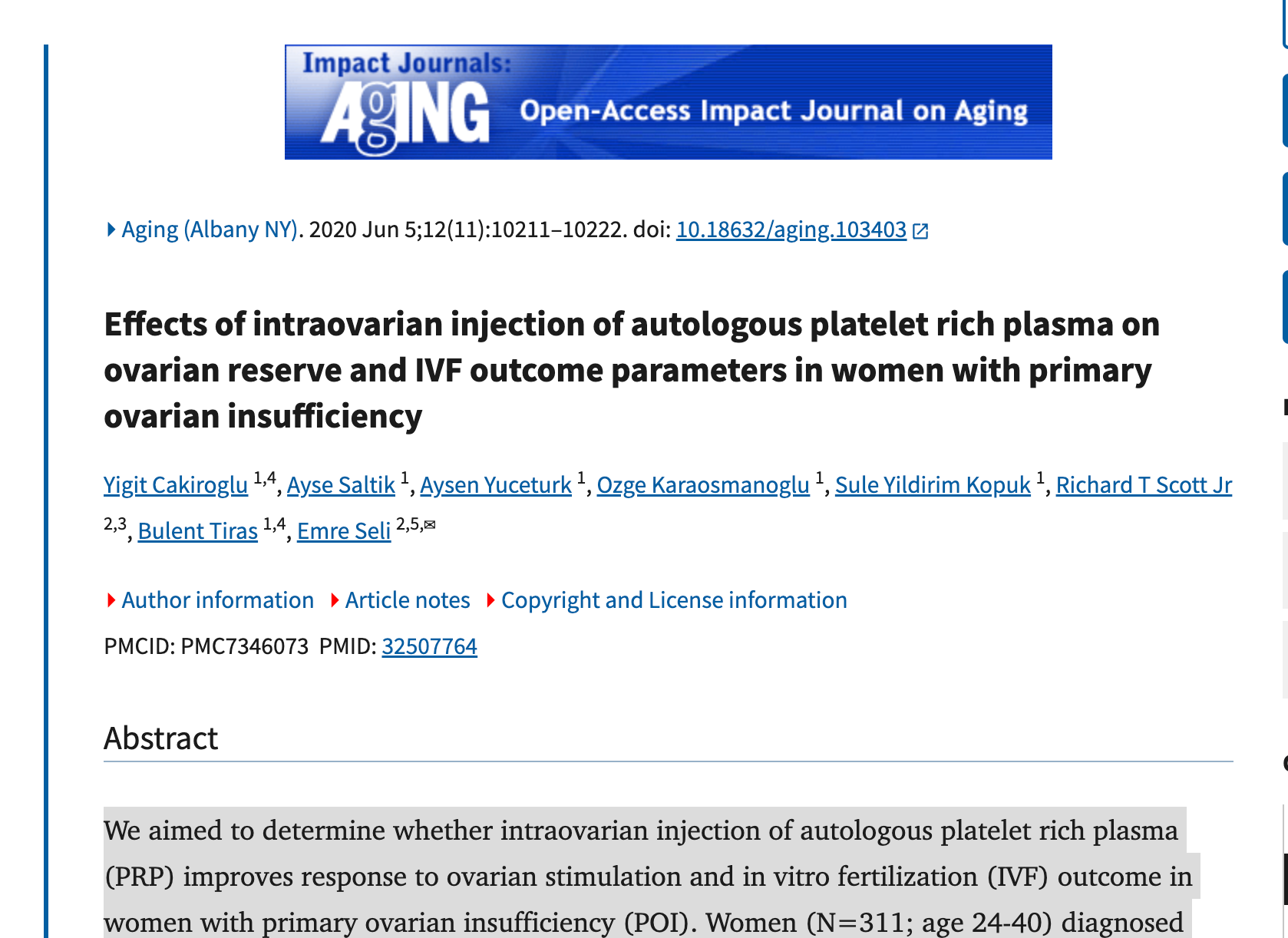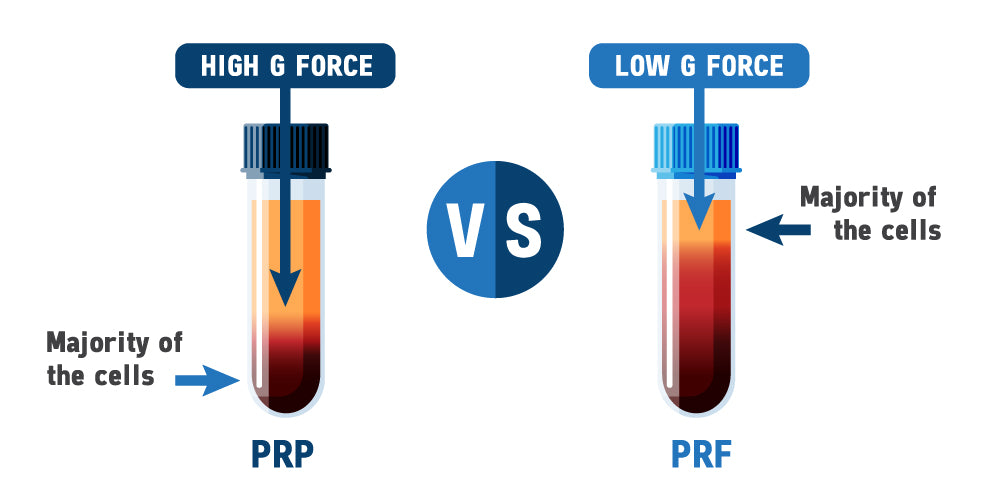Abstract: Platelet-rich plasma (PRP) is widely used in human medicine, but seldom used in veterinary practice. Even so, the efficacy of PRP in osteoarthritis, dental implants, bone defects and wound healing in dogs and horses is well documented. There are many commercially available PRP tubes and kits for horses and humans, but studies on the effectiveness of these products in dogs are limited. Researches have demonstrated that systems developed for humans and horses do not always produce the same results in dogs. In the present study, two prevailing systems, a sodium citrate-based system and a gel-based system, were compared in terms of their platelet output. The data obtained revealed that, although there was no statistically significant difference between the two systems, the sodium citrate-based kit is probably more efficient in practice due to its superiority in volume output. PRP is an important component of regenerative therapy. It is autologous and practical, but has not been sufficiently implemented in veterinary practice, but promising clinical satisfaction and must be considered in various conditions.
Click here to read the full text
Note: T-Lab™ System Users receive full access to all studies (in PDF) via their HCP Portal.







